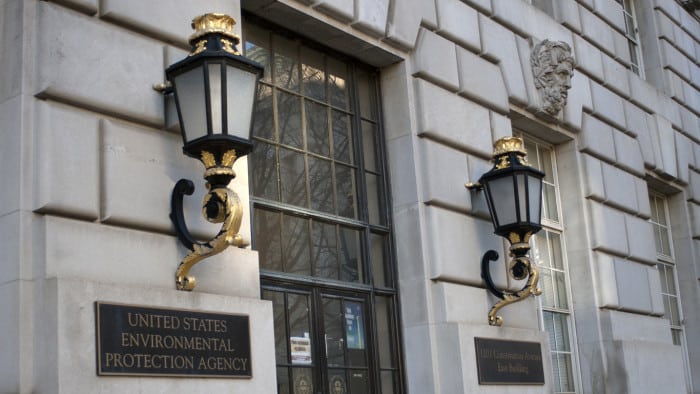
As the dust settled after Tuesday’s oral arguments in the massive legal challenge against the Environmental Protection Agency’s Clean Power Plan, the inevitable analyses launched early Wednesday morning. At two events, litigants in the case and legal experts weighed in on the proceedings.
The case against the Clean Power Plan, carbon emissions standards for existing coal-fired power plants, was launched in October 2015 when the final rule was published in the Federal Register. A coalition of 27 states and various energy producers, utilities, and trade organizations quickly sued the EPA. An additional 18 states, the District of Columbia, and several municipalities, power companies, technology companies, and business associations backed the EPA as intervenors in the lawsuit.
All speakers agreed it was a long day in court Tuesday. Clocking in at 6 hours 42 minutes, the arguments in front of a 10-judge panel of the U.S. Court of Appeals for the D.C. Circuit were roughly twice as long as scheduled. Both sides of the case, however, seemed to agree that the length was a good thing. “What is clear is the judges were deeply interested and concerned by this case, these issues. They were not going to set up a situation where anyone felt they did not have the full opportunity to present their arguments,” attorney Thomas Lorenzen, who argued for the industry petitioners before the court, said Wednesday at an event hosted by the Georgetown Climate Center and the Georgetown Environmental Law Program.
West Virginia Solicitor General Elbert Lin, who argued for hours Tuesday for the state petitioners, also noted the length of the hearing during an event hosted by the District of Columbia Bar. “It was really long, and the chairs were uncomfortable,” he said with a laugh. “The judges were very engaged, and they were very prepared, and they were very interested in grappling with these issues and making sure that everybody got their time to present their arguments.”
The arguments covered five topic areas in which the petitioners have challenged EPA’s rule, which requires states to develop action plans to meet federally set emissions reduction targets: the use of outside the fence-line measures; the legality of drafting a rule for coal-fired power plants under Section 111(d) of the Clean Air Act; constitutional issues; claims that the regulation was changed too much between the proposed and final forms; and issues relating to the EPA’s inability to ensure that states will be able to comply even in “the most adverse circumstances.”
While litigants on the petitioners’ side appeared cautiously optimistic Wednesday, saying that they felt their arguments were understood and well received, those supporting the EPA seemed more confident in their position. “I find it hard to see a coalition of six [judges] voting against EPA on any of the key issues,” David Doniger, director of the Natural Resources Defense Council’s Climate and Clean Air Program, said at the D.C. Bar event.
The petitioners only need to prevail in one of the five areas to win the case, meaning the EPA must prevail on all counts to sustain the Clean Power Plan.
At both events, those representing the anti-CPP petitioners seemed to believe that the argument best received by the court was that the EPA does not have the authority to call for outside the fence-line measures. Under Section 111(d) of the Clean Air Act, the statute under which the CPP was drafted, the agency is tasked with determining the best proven system for reducing the emission of the pollutant in question from the source in question; in the CPP that is carbon from coal-fired power plants.
The EPA developed a “building block” system, which includes three means for reducing emissions: efficiency improvements at the plant; using natural gas; and using more renewable power. The first building block is permissible, petitioners said Tuesday, but the second two, which require generation shifting, unfairly require coal-fired power plant owners to invest in competing technologies.
That forced investment makes the rule transformative in scope. “I think the biggest issue that I see coming out of the day is really sort of how transformative is this rule,” Lin said at the D.C. bar event. “I think the vast majority of judges, or the ones who spoke up about it, I think understood and agreed that this rule is different from other rules.”